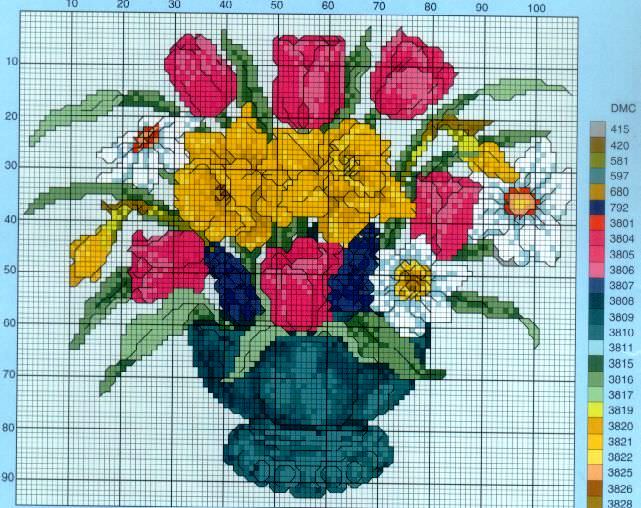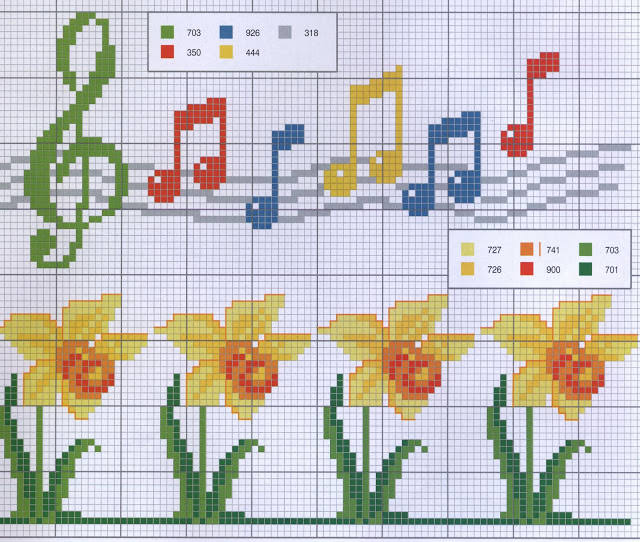
Cross-stitch Gzhel cross-stitch patterns
Content
The word "Gzhel" is associated with manyceramic items of white color, on which patterns of blue and blue shades are depicted. In this regard, the embroidery, which is done on a snow-white canvas with blue and blue threads, is called "Gzhel". Cross-stitched items created in this theme are ideal for decorating your kitchen or dining room.
The Gzhel style design can be embroidered using satin stitchor cross stitch, but the threads must be blue shades. Usually, four to eight shades of color are used in the work, but sometimes their number can reach twenty or even thirty. They begin to embroider with the lightest shades and then gradually move on to the darkest ones. The transitions must be smoothed out as much as possible. Contrasts are not allowed in Gzhel. Therefore, the more shades you take into work, the more beautiful your embroidery will look in the finished version. If you embroider with a cross stitch, then works sewn according to large patterns will look more natural.
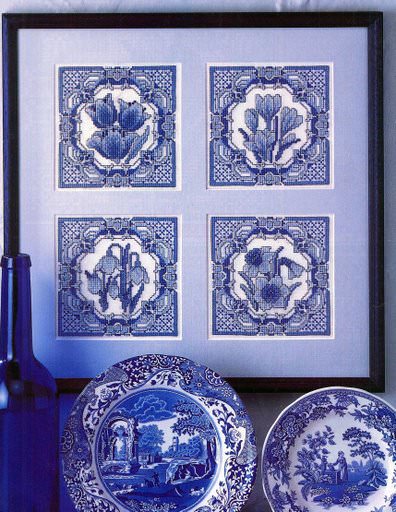

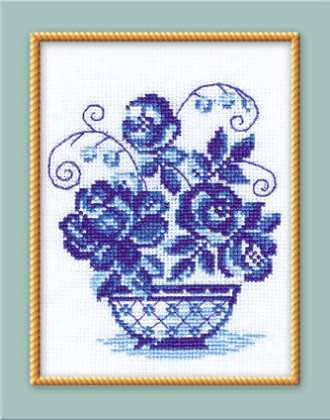


Let's start embroidering
As for any other embroidery, at firstYou need to organize your workplace. Prepare a fabric on which you will embroider, a needle, a thimble and other things you need. Put your strings in the organizer or fold it into a separate box. Review the selected scheme. Try to illuminate your workplace with a fluorescent lamp.

To prevent your embroidery from crumbling while you work,hem it manually or use a sewing machine. You can process the edges with a specially designed product or even with PVA glue and double-sided tape. When using the latter to process the canvas, remember that with this option, the embroidery will be cut off at the end of the work, which means that you should take care to increase its size by about 1 cm in advance. Next, stretch the canvas onto a hoop or frame and use a special water-soluble or disappearing marker to draw squares on it, each of which should contain ten cells. The largest elements that your Gzhel cross stitch contains are usually made using the "
".Moreover, as a rule, they use a six-thread addition. This technique implies that you need to count the number of crosses of one color on the diagram and transfer them to the fabric used for embroidery in the same order and quantity.
To start cross stitching,we fasten the thread from the wrong side and bring it to the front in the lower corner of the cell on the right. We make our stitch, laying the thread diagonally and sticking the needle into the upper corner on the left. We repeat all the actions until the row is finished. It will be embroidered with a half-cross in one direction. When the embroidery of the row is finished, we bring the needle from the wrong side to the right, but now to the upper corner and begin to move with the same half-cross in the opposite direction, sticking the needle into the lower left corner.
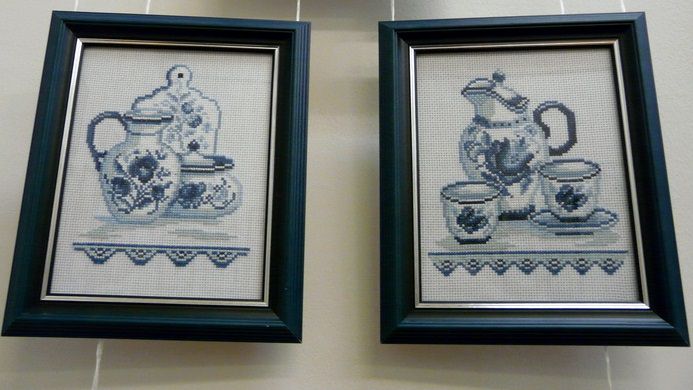
If you liked the Gzhel embroidery onplant theme, do not forget that the stems of leaves or tendrils of flowers are usually made with a back stitch. The thread is used in two folds. This is exactly the way to embroider patterns depicted on dishes. In addition to the above-mentioned stitch, a dotted stitch is also used. The distance between its stitches must necessarily correspond to their length. Although your Gzhel embroidery is sewn with a cross, do not limit yourself in techniques. Add French knots where appropriate or make some floral elements with fixed loops. And also use other stitch options known to you.
Perfect cross

Many needlewomen around the world are tormented by the problemuneven crosses. What can be done to bring the appearance of your stitches closer to the ideal? Well, first of all, cross stitching does not like haste. So take your time and carefully monitor your stitches. Do not allow the thread to get tangled or twisted while embroidering. Release the needle sometimes, let it hang freely on the thread for a few seconds. Or you can use another method: just turn the needle clockwise after every three stitches from the front side. Never tighten the thread. It is worth tightening even a little more than necessary, and you are guaranteed to get a cross stitch that is curved in many places. If during the embroidery process the thread suddenly begins to disintegrate into separate fibers and seems to "fluff", this can indicate two things. First, it is the quality of the threads. Good quality threads behave this way only when there are problems with the eye of the needle. And this means that if you are confident in your threads, then it is worth changing the needle. Otherwise, your finished Gzhel embroidery will look shabby and untidy. An excellent tool for perfect embroidery is a conditioner or wax for threads. Rubbing your threads, you will certainly achieve that your embroidery will look just perfect.
And yet the most important rule for embroidery inGzhel technique remains the selection of thread colors. They should in no case contrast with each other. Remember that only very smooth transitions in combination with a perfectly white canvas will allow your work to approach perfection. Embroidery with melange threads or a combination of several colors in one looks especially beautiful. Just combine two or three threads of different shades into one and stitch several crosses in a row in the place where you think it is necessary.
Shutdown
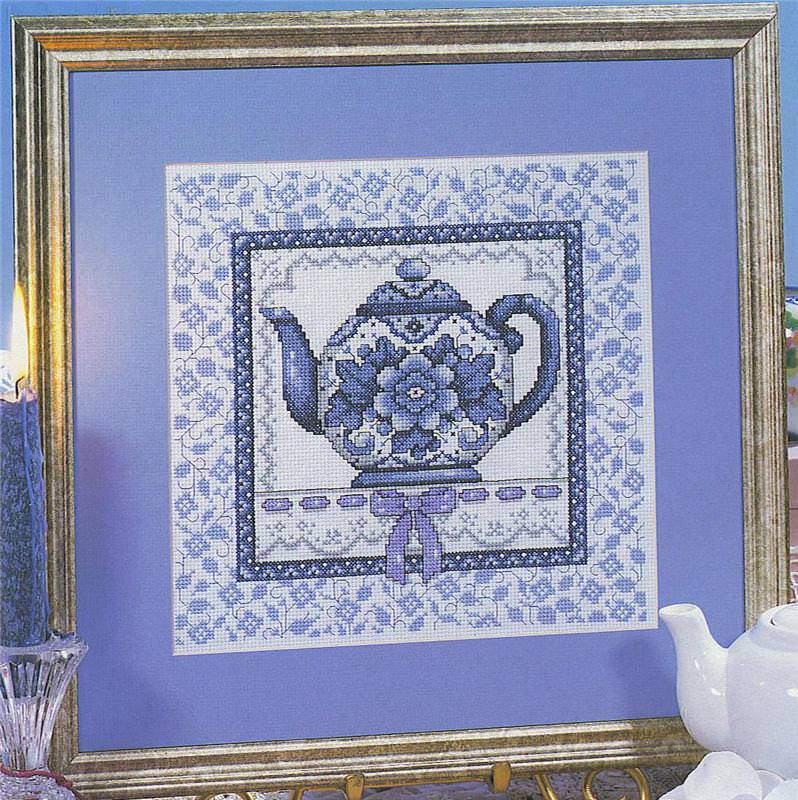
When the work is completed, the embroidery is subjected towash in lukewarm water using soap. Rubbing and wringing such work is prohibited under any circumstances. The embroidery is blotted with a towel and dried in an unfolded form on some fabric. Carefully and carefully iron your embroidery.
The finished Gzhel embroidery is fixed on cardboardwith threads or glue and inserted into a frame of a matching color. Instead of glue, you can use double-sided tape. Or go to a framing workshop and the craftsmen working there will be happy to help you with the design of your masterpiece. This embroidery also looks great on clothes, pillows, napkins and tablecloths.
Video: story about embroidery in Gzhel technique
